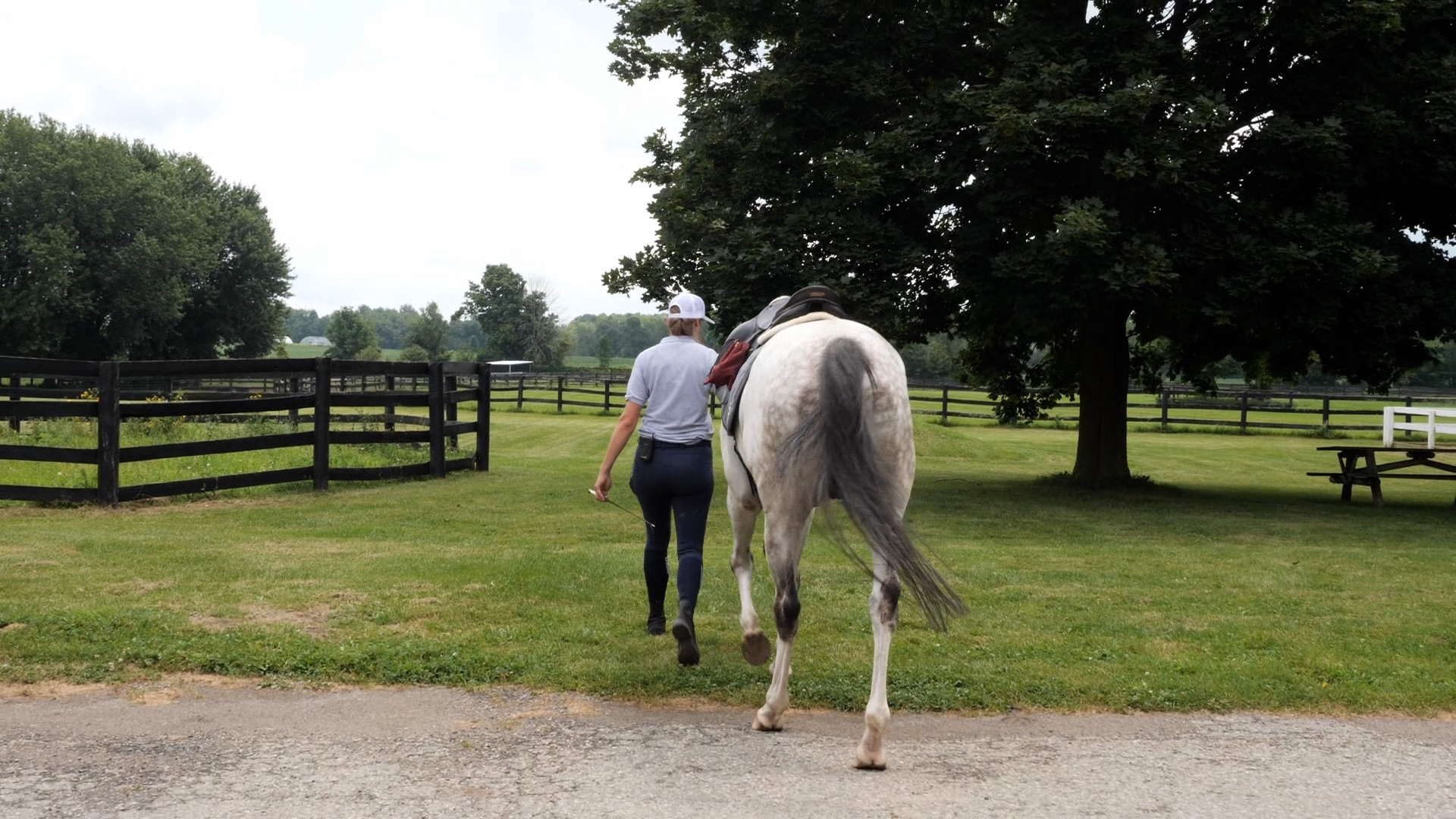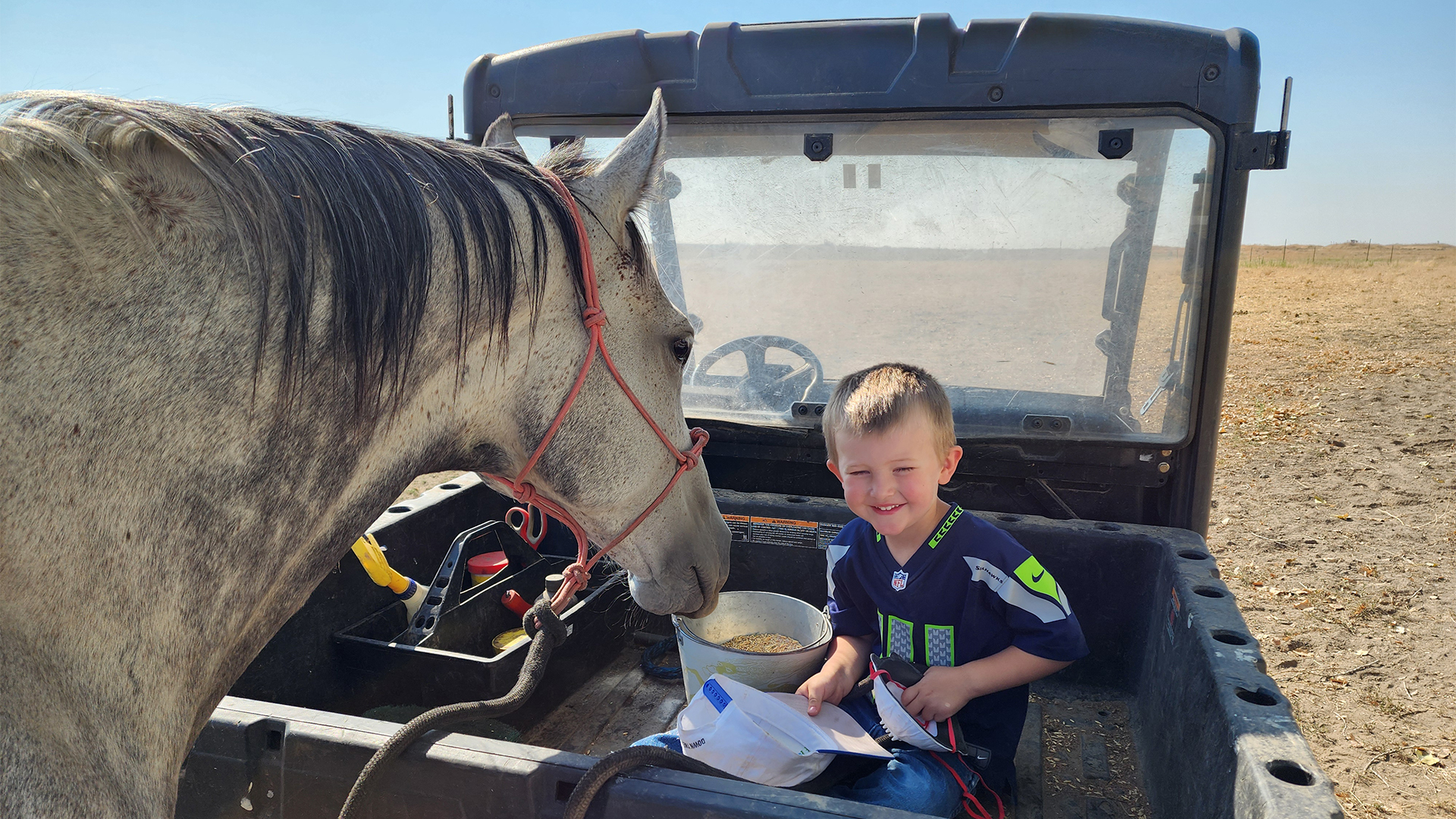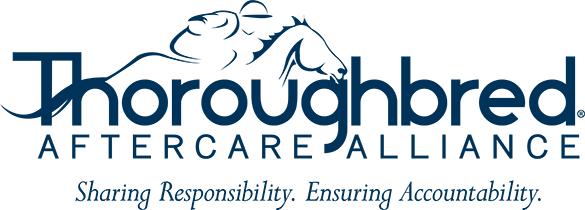Archive
All Posts & News Press Releases Success Stories Aftercare Editorials Retraining Tips Supporter Features Equine-Assisted Learning Inspector Spotlights Hamburger Toggle Menu Previous Post Getting Started with Groundwork and Manners for Your Ex-Racehorse Getting Started with Groundwork and Manners for Your Ex-Racehorse By: Alexis Arbaugh April 11, 2025 Retraining Tags:Accredited Organization, Groundwork, LongRun Thoroughbre, Manners, Retraining, Thoroughbred Aftercare Alliacne Lauren Millet, LongRun Thoroughbred Retirement Society Thoroughbred Aftercare Alliance recently had the pleasure of speaking with Lauren Millet, the trainer at LongRun Thoroughbred Retirement Society, about her approach to retraining ex-racehorses. Based in Toronto, Canada, LongRun is a Thoroughbred Aftercare Alliance-accredited organization dedicated to the rehabilitation, retraining, and adoption of retired Thoroughbred racehorses. Growing up, Lauren frequented the racetracks in Canada and hoped that one day she would have a job working with racehorses. Years later, Lauren became the Farm Manager at LongRun, where she oversees the training and riding of all the horses that enter the facility. Her role involves assessing the training of each horse and building upon their foundation. Additionally, she evaluates each horse once the retraining process begins to determine the most suitable second career for them. “Groundwork in racehorses totally varies based on where they come from, who their groom was and what they were allowed to do at the racetrack,” writes Lauren. Nearly all racehorses are hand-walked almost daily from the time they are weaned, which instills good manners and ensures they walk confidently and respectfully beside their handlers. However, Lauren notes that most ex-racehorses are not taught the following: “how to move away from pressure, back up when asked, step over or around obstacles, stand in crossties or tied outside.” The life of a racehorse is quite different from that of a sport horse, so they’re taught different skills from an early age to help them succeed in their specific careers. “They [racehorses] are taught the things that they need to know at the track, such as: how to tie in a stall, lead to the left, pick all 4 feet from the left side etc.,” Lauren says. She encourages people to recognize the importance of understanding what that specific horse was taught on the track, as it directly influences how they should be trained off the track. At LongRun, horses arriving directly from the racetrack will either require rehabilitation with stall rest or benefit from a period of downtime before beginning their retraining program. “If a horse is on stall rest, obviously in-hand manners cannot be tested, but we do look for stall manners,” Lauren comments. Observing whether a horse respects your presence or shows signs of any bad behavior when you enter their space can be crucial in determining what to focus on during stall rest. It is the person’s job to show and teach the horse what you want from them. “With some it is easy, while others might be annoyed and irritated that they are on stall rest,” notes Lauren. She is essentially saying that there is a limited number of things that you can teach a horse while in a stall, but you can teach them to respect your space and to move away from pressure. For horses that retire sound from the track and only need downtime, it’s easier to assess their groundwork and manners. Each horse will require a varying amount of downtime before beginning their retraining. Lauren feels that you can learn a great deal about a horse based on their behavior while walking to and from the pasture, “this gives us a chance to see which horses might require some ground to learn respect before jumping into the saddle and which horses might be good to go”. Teaching a horse to walk over poles, back up, and move away from pressure are essential skills for riding. Therefore, starting with groundwork—regardless of the horse’s prior training—provides them with a solid foundation and helps ensure the safety of both you and the horse. “It just helps to ease their confusion when learning all the new things at once,” Lauren expresses. “Once they understand, it makes for a much happier time for both horse and human.” Lauren Millet LongRun Thoroughbred Retirement Society Once a horse has completed their rehabilitation or downtime, it’s time to focus on skills that will assist them in their second career. Lauren mentions that it usually becomes clear what kind of retraining a horse will need after they’ve been on the farm for a couple of days. Horses that arrive at LongRun with prior handling and riding experience typically transition more smoothly, as they already have a head start. In contrast, those with less experience require additional time to learn the basics before formal retraining can begin. “Many racehorses carry tension, and it’s important to teach them right away to let that go,” observes Lauren. She emphasizes the importance of ensuring that all horses are comfortable in their own bodies and able to move freely and without stress. Teaching a horse to remain relaxed and not feel tense can be challenging; it requires a significant amount of patience and understanding from the trainer, especially during the initial stages. “The goal is to teach the horse that whatever the encounter, their response should be to remain calm and think about what they are doing,” Lauren emphasizes. Horses are intelligent and eager to please, but it’s essential to clearly demonstrate to the horse what behaviors are acceptable and which are not. “If you let them [horses] take an inch, they will take and mile,” writes Lauren. It’s important to kindly discipline a horse when they exhibit undesirable behavior and to praise them when they do something you approve of. A horse will remember the discipline and will be less likely to repeat the behavior that got them in trouble. Conversely, when a horse is praised for doing the right thing, they are likely to remember that positive reinforcement and want to replicate the behavior to receive more praise. Establishing clear ground rules from the beginning is
Read More >All Posts & News Press Releases Success Stories Aftercare Editorials Retraining Tips Supporter Features Inspector Spotlights Hamburger Toggle Menu Previous Post Equine-Assisted Learning: Down the Stretch Ranch Equine-Assisted Learning: Down the Stretch Ranch By: Daniel McCanna ‘Boone’ April 11, 2025 Equine-Assisted Learning Tags:accredited aftercare, Aftercare Organization, Down The Stretch Ranch, Equine Therapy, Equine-Assisted Learning, equine-assisted therapy, Therapy, Thoroughbred Aftercare Alliance Through our Equine-Assisted Learning series, we aim to showcase the incredible work of Thoroughbred Aftercare Alliance-accredited organizations that use retired racehorses in therapeutic programs. Each of these programs offers a unique approach to healing and supporting participants in physical, emotional, and mental well-being. This series will explore how Thoroughbred ex-racehorses are now partners in therapy, providing a safe, supportive environment where individuals can experience growth and recovery. Down the Stretch Ranch (DTSR), est. 2014 At Down the Stretch Ranch, our passion for horses runs deep, but even more so, our commitment to helping people heal through the incredible bond between humans and horses drives everything we do. Located on a sprawling ranch in Eastern Washington where retired thoroughbred racehorses find new purpose, we use the power of equine therapy to transform lives. A Second Chance for Horses and Humans Retired racehorses come to the ranch from various trainers around the northwest, mainly California. The horses arrive in good health but have certain soundness issues that have kept them from being able to compete at the racetrack. Often these racehorses face uncertain futures, but at DTSR, we offer them a second chance—not just to live out their days in peace, but to become catalysts for healing. Thoroughbreds, with their spirited nature, teach patience, empathy, and trust—qualities that are crucial for individuals overcoming trauma, stress, or mental health challenges. By interacting with these horses, participants develop deeper emotional connections and learn essential life skills in a non-judgmental, nurturing environment. This forces each individual to be in the present. DTSR – Creston, WA When the horses first arrive, they are evaluated and placed in suitable corrals to assist them with healing. We are committed to giving the horses at least one year at the ranch before we consider rehoming them or whether we will keep them at the ranch for the rest of their life as a sanctuary horse. After evaluating the horse for a year, we determine if the horse is suitable for adoption or if it will live out its life at the ranch. The ranch has one hundred grazeable acres, and the horses are able to roam the entire pasture. This kind of roaming helps with the circulation in their feet and their overall digestive health. When the snow flies, we feed first cutting alfalfa, oat hay and grain. All the farrier and dental work is done on individual as needed basis. We have two experienced horseman that are always at the ranch, and both have extensive knowledge on how to care for the horses and provide farrier work and provide excellent care for the horses. The favorite part of the ranch is watching the horses transform from the high intensity work at the racetrack, to a slow county retirement living. These horses are so incredibly smart! It is a pleasure to drive out in the field and have the whole herd run over to you to get their daily attention and treats. Therapy for Veterans and Children at DTSR Unlike traditional therapy, equine therapy offers a unique, experiential approach to healing. Whether it’s learning to groom, guide, or simply be present with a horse, participants find comfort and confidence in the connection they build. Horses have a natural ability to mirror human emotions, offering real-time feedback that helps individuals process feelings they may struggle to articulate. Over the last 10 years the ranch has hosted hundreds of veterans and children with nothing but positive feedback! Our staff would like to take the credit for all the positive outcomes over the last 10 years, but it is simple to see the horses provide the magic! Learn more about Thoroughbred Aftercare Alliance’s accredited organizations: Accredited Equine-Assisted Learning Organizations Share This Article
Read More >














